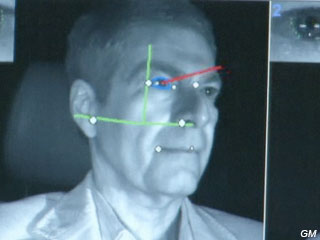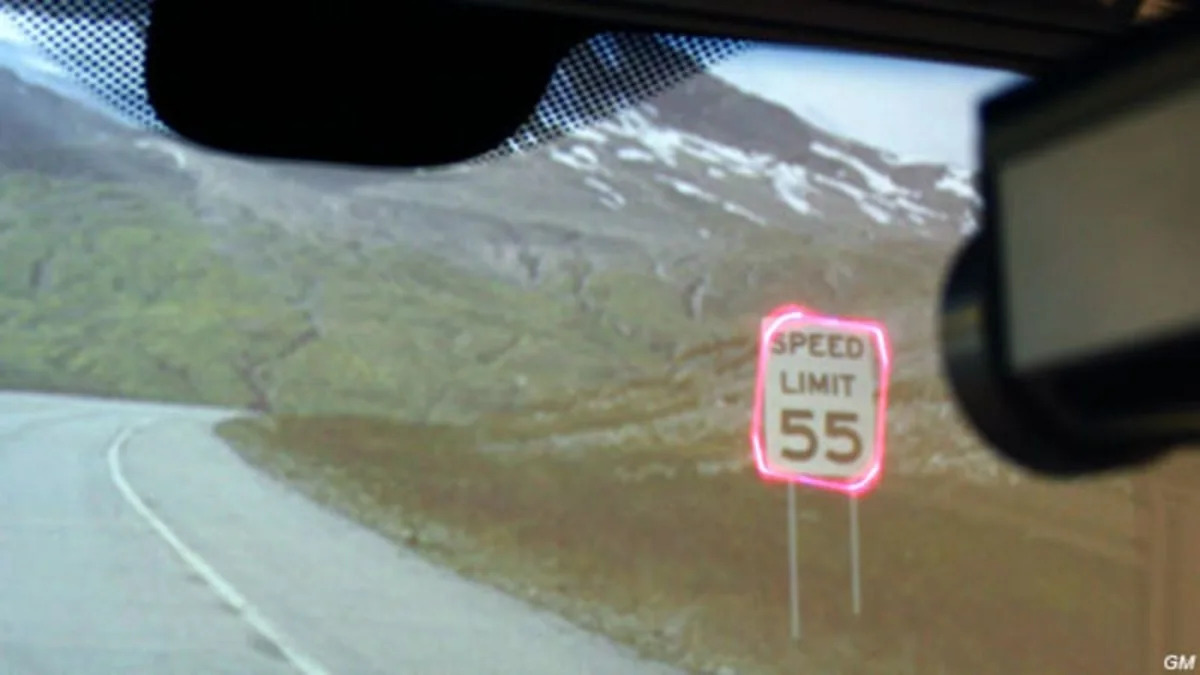As we've learned recently, GM is hot on the trail of turning the entire windshield into a heads-up display. Its vision is to display pertinent vehicle information and even safety alerts on the glass. Placing more information in your line of sight means you wouldn't be forced to look down at the dashboard or into the center console. Sounds good, but is this really such a good idea? Should driving a real car resemble a video game?
 Purists will tell you that cars should have little more than four wheels and an engine. But the reality of modern-day motoring is that cars are being stuffed with more and more features that demand interaction. Some of these are for well and good, like lane-departure warnings and other such safety alerts, but much of this new technology can be distracting.
Purists will tell you that cars should have little more than four wheels and an engine. But the reality of modern-day motoring is that cars are being stuffed with more and more features that demand interaction. Some of these are for well and good, like lane-departure warnings and other such safety alerts, but much of this new technology can be distracting.
The tipping point comes when we've got more information than we can reasonably process while driving. We need to start thinking about efficient ways to manage the data flow. Some of this information will continue to come from the vehicle itself, some will come from external sources (think: there's a car heading toward us at the intersection and he's not stopping), while others are introduced by our plain inability to leave Facebook alone for an hour. How do we manage it all?
While we're fans of heads-up technology, here are three arguments against introducing information into the windshield area. On which side do you weigh in?
1. There's too much time required to refocus your eyes.
When GM started rolling out heads-up displays (the 2003 Corvette C5 was the first model we drove with the system -- it was noted as GM code UV6 "Display, Heads Up" on the order sheet), we found it to be an interesting technology but we didn't really use it in daily driving.
The Corvette had information displayed in a very lightweight, light green typeface. We found it took a second or two to unfocus our eyes from the road in the distance and refocus on the display a few feet from our face. That transition -- the "clock speed" on eyeballs -- was just a bit too long. Do the test yourself: Look 100 yards away for a few seconds, focusing on a sign or building in the distance. Then, without moving your eyes or head, place a sheet of paper in your line of sight. The shift is not instant.
2. Giving bad drivers more things to look at isn't going to help.
In the U.S. we consider driving a right. With few real options for public transit outside of major metros, car-based transportation is required. So we've dumbed down our driver education system to the point that we really just let anyone with a pulse out on the road. Driver's training in the U.S. is a joke compared to much of the rest of the world, as evidenced by our per capita death rate for road accidents. It's downright horrible: In 2003 we ranked 43rd, behind Jamaica, Poland and Belgium, to name but a few. Saddling a poor driver with more information seems counterintuitive to getting him to focus on what should be the most important task at hand, piloting the car.
3. We're too easily distracted, period.
Some of the most advanced HUD innovations we've seen seem to be stuck in the day-glo era. All the colors are bright green, pink, orange or blue. That makes for pretty pictures but it seems like a direct contrast to our non-Vegas driving routes. If a driver looks out on the windshield and sees a pink alert around a road sign, will he miss the brown jalopy pulling out in front of him? We're not color blind but we know how easily (and lamely) our brain makes decisions. Will this hurt our ability to prioritize what's important on the road?
 Purists will tell you that cars should have little more than four wheels and an engine. But the reality of modern-day motoring is that cars are being stuffed with more and more features that demand interaction. Some of these are for well and good, like lane-departure warnings and other such safety alerts, but much of this new technology can be distracting.
Purists will tell you that cars should have little more than four wheels and an engine. But the reality of modern-day motoring is that cars are being stuffed with more and more features that demand interaction. Some of these are for well and good, like lane-departure warnings and other such safety alerts, but much of this new technology can be distracting.
The tipping point comes when we've got more information than we can reasonably process while driving. We need to start thinking about efficient ways to manage the data flow. Some of this information will continue to come from the vehicle itself, some will come from external sources (think: there's a car heading toward us at the intersection and he's not stopping), while others are introduced by our plain inability to leave Facebook alone for an hour. How do we manage it all?
While we're fans of heads-up technology, here are three arguments against introducing information into the windshield area. On which side do you weigh in?
1. There's too much time required to refocus your eyes.
When GM started rolling out heads-up displays (the 2003 Corvette C5 was the first model we drove with the system -- it was noted as GM code UV6 "Display, Heads Up" on the order sheet), we found it to be an interesting technology but we didn't really use it in daily driving.
The video meant to be presented here is no longer available. Sorry for the inconvenience.
The Corvette had information displayed in a very lightweight, light green typeface. We found it took a second or two to unfocus our eyes from the road in the distance and refocus on the display a few feet from our face. That transition -- the "clock speed" on eyeballs -- was just a bit too long. Do the test yourself: Look 100 yards away for a few seconds, focusing on a sign or building in the distance. Then, without moving your eyes or head, place a sheet of paper in your line of sight. The shift is not instant.
2. Giving bad drivers more things to look at isn't going to help.
In the U.S. we consider driving a right. With few real options for public transit outside of major metros, car-based transportation is required. So we've dumbed down our driver education system to the point that we really just let anyone with a pulse out on the road. Driver's training in the U.S. is a joke compared to much of the rest of the world, as evidenced by our per capita death rate for road accidents. It's downright horrible: In 2003 we ranked 43rd, behind Jamaica, Poland and Belgium, to name but a few. Saddling a poor driver with more information seems counterintuitive to getting him to focus on what should be the most important task at hand, piloting the car.
3. We're too easily distracted, period.
Some of the most advanced HUD innovations we've seen seem to be stuck in the day-glo era. All the colors are bright green, pink, orange or blue. That makes for pretty pictures but it seems like a direct contrast to our non-Vegas driving routes. If a driver looks out on the windshield and sees a pink alert around a road sign, will he miss the brown jalopy pulling out in front of him? We're not color blind but we know how easily (and lamely) our brain makes decisions. Will this hurt our ability to prioritize what's important on the road?


Sign in to post
Please sign in to leave a comment.
Continue